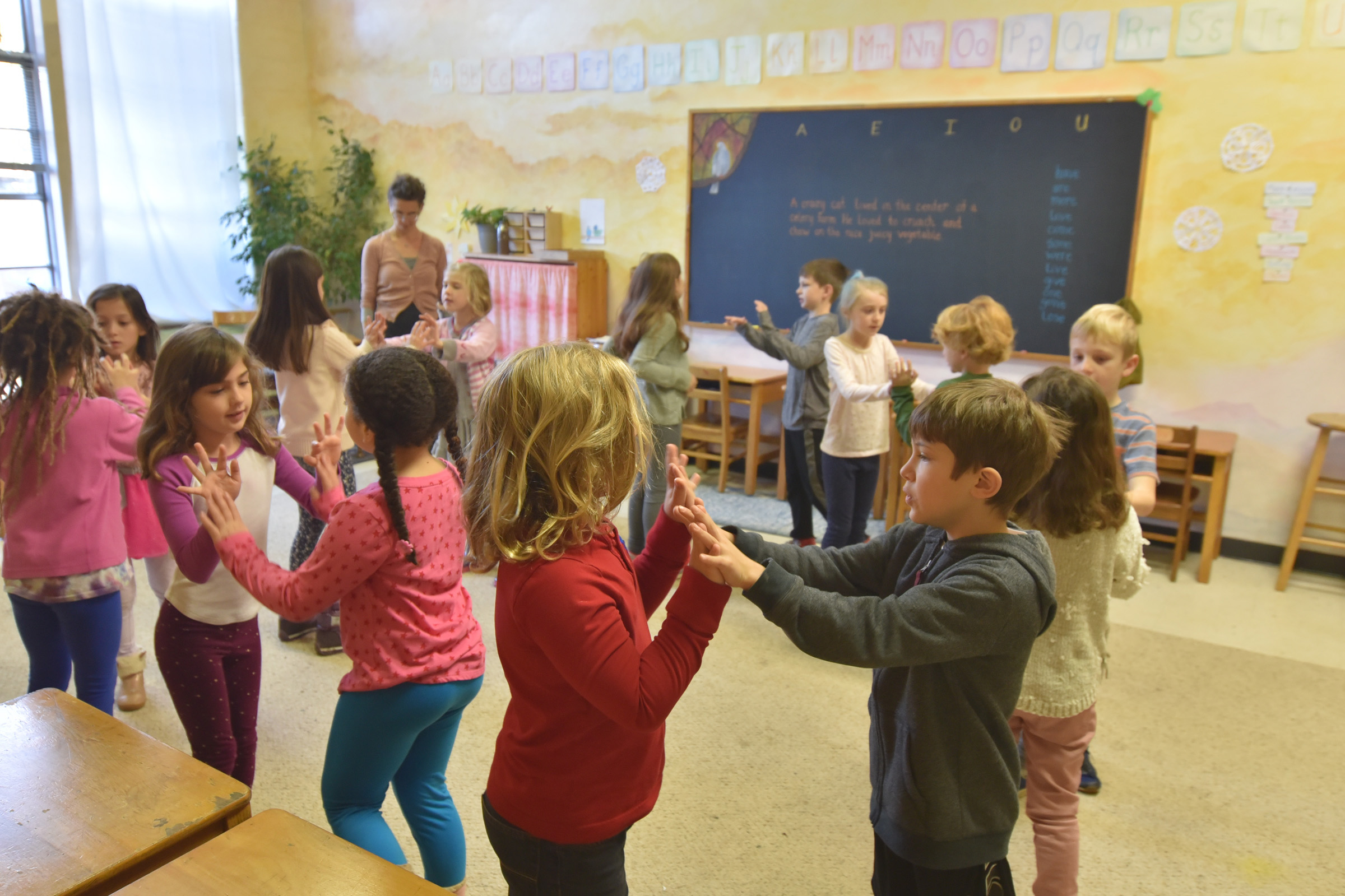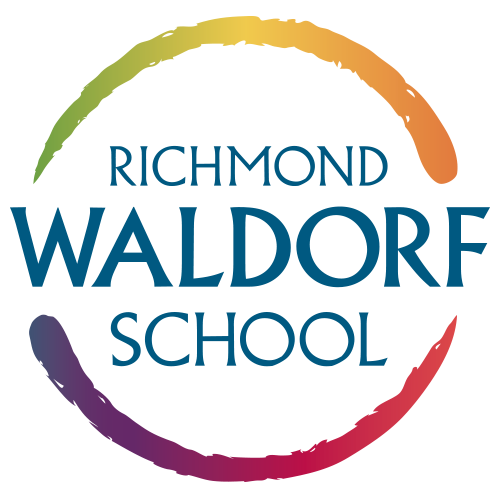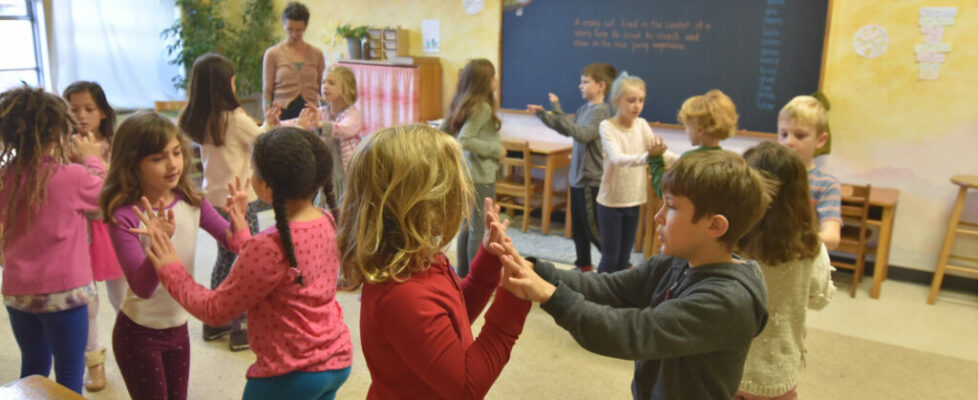Stanford: Why Waldorf Math Works

An in-depth study by Stanford University of the Waldorf educational method in place at a public school in Sacramento, CA found that those students outperformed their peers in other public schools in their district in math, with the most gains among African American, Latino, economically disadvantaged students and other traditionally underserved students. The researchers found that in Waldorf education math is taught in multiple ways. Students move their math, sing their math, paint, draw and build their math, and it is brought into other lessons like history. This way of teaching is more approachable and enjoyable for all students.
Why is singing math, moving to math, painting or drawing math so important? Because it keeps students engaged and thinking about the various ways these important skills can be represented and applied. In Waldorf education, subjects are woven together and presented in lively, experiential Main Lessons. The photo above shows our 2nd grade class learning their multiplication tables – what you can’t hear is their voices chanting the facts in unison while clapping and moving in time. It is activities like these where we see our students fully engaged and having so much fun, they don’t realize how much they are learning.
As students approach the upper elementary grades, complex fractions, business math, long division, and more are presented in both practical and creative ways. Waldorf teachers take care to compose a lesson that is full of active learning, followed by quiet reflection as the students create Main Lesson book pages to reflect the days’ lessons. The interdisciplinary approach is part and parcel to the Waldorf classroom.
Read more about Stanford’s study and their findings of how a public Waldorf school stood against its traditional counterpart here:
https://edpolicy.stanford.edu/library/publications/1386
Alice Birney Waldorf-Inspired School, a public K-8 school of choice within the Sacramento City Unified School District, provides a powerful example of an alternative educational approach within a public system. Rather than focusing on preparation for standardized tests, Waldorf students are deeply involved in a full range of expressive arts – ranging from watercolors and music to knitting and physical activity; they learn science by gardening and investigating natural phenomena, mathematics by designing and building things of practical value, history from studying biography and the human meaning of historical events, English language arts by writing their own books and extended accounts of what they are learning. The school’s attention to comprehensive student development, including their social-emotional, physical and artistic development has profoundly shaped its graduates into young adults.
A study, “Growing a Waldorf-Inspired Approach in a Public School District,” produced by the Stanford Center for Opportunity Policy in Education (SCOPE), details the specific practices of a Waldorf-inspired approach at Alice Birney and their outcomes for students. The study also examines the district’s role in supporting alternative models of education while working to ensure equitable access to a high quality education for all its students.
The study documents how the instructional approaches at Birney lead to strong student outcomes. Quantitative analysis of student record data compared to similar students in other district schools reveals that Birney students have low transiency and suspension rates and positive student achievement outcomes on standardized state assessments, particularly for African American, Latino and socio-economically disadvantaged students.
Beyond being a study of one individual school, this study illustrates the power of a school district in supporting and enabling a school’s fidelity to its approach and sustainability. Finally, at a more macro level, this study provides insight into how to create space in public schools for a broader definition of education, without forcing these models out into the charter school space. It sheds light on the policy conditions necessary to achieve this broader goal.
The study of Alice Birney Waldorf-inspired School was funded by Rudolf Steiner College.
At Richmond Waldorf School, we recognize that our student’s physical, social and emotional well-being are a key part of their ability to learn and thrive. Our holistic approach to education prioritizes critical thinking, communication, collaboration and creativity to prepare students for the challenges of the 21st century.
Get to know if the Waldorf approach is right for you! Join an information session or meet with our Enrollment Administrator to learn more about Richmond Waldorf School.
Choosing a school is a very important decision in a family’s life. Our admissions process is designed to give you as much information as you need to make an informed decision about enrolling your children. Whenever possible, we encourage all families to book a visit when considering Richmond Waldorf School. We want to meet you! It is just as important for us to know who you are and what you are looking for in a school, as it is for you to know who we are and what Waldorf education is about.
Valerie Hogan
Enrollment & Marketing Administrator
| 804-377-8024 ext 3

